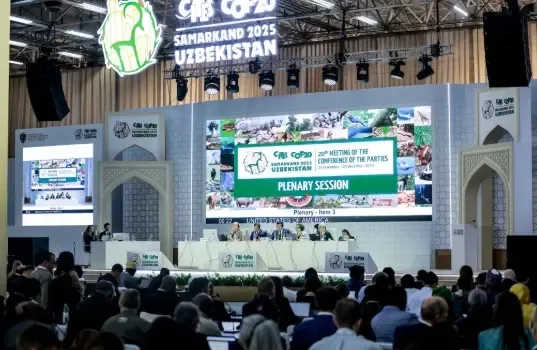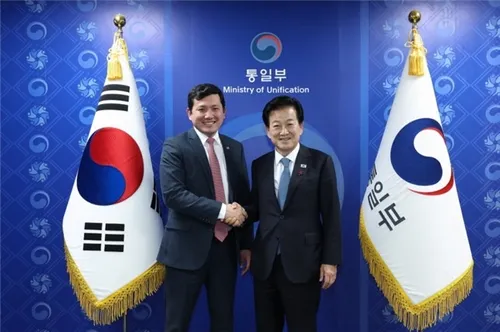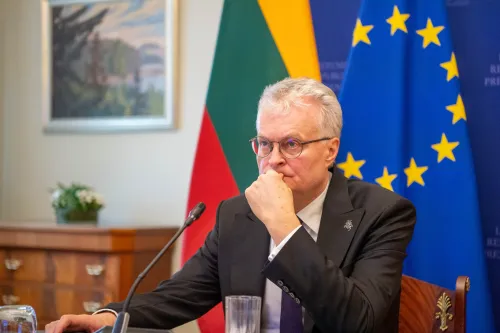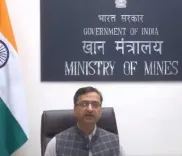What Will Delegates Decide on Global Wildlife Trade Rules at CITES CoP20 in Samarkand?

Synopsis
Key Takeaways
- CITES CoP20 marks a historic milestone in global wildlife conservation.
- Delegates are set to negotiate crucial wildlife trade rules.
- Uzbekistan emphasizes sustainable practices as a national priority.
- The conference aims to align with global biodiversity frameworks.
- Broad participation ensures diverse perspectives in decision-making.
Samarkand (Uzbekistan), Nov 25 (NationPress) In an unprecedented milestone for the Convention on International Trade in Endangered Species of Wild Fauna and Flora (CITES), the 20th meeting of the Conference of the Parties to CITES (CITES CoP20), referred to as the World Wildlife Conference, has officially commenced in Uzbekistan, turning this ancient Central Asian city into a hub of international conservation diplomacy.
Organized by the National Committee on Ecology and Climate Change of the Republic of Uzbekistan, the opening ceremony showcased lively traditional Uzbek music and dance performances. This event highlighted the nation’s pride in hosting such a pivotal occasion, bringing to life the official slogan of the conference, “CITES at 50 in Samarkand: Bridging Nature and People.”
During his opening address, Aziz Abdukhakimov, Advisor to the President of Uzbekistan, Chair of the National Committee on Ecology and Climate Change and CITES CoP20 President, stressed Uzbekistan’s commitment to the sustainable use of wildlife resources, stating: “The declaration of 2025 as the ‘Year of Environmental Protection and the Green Economy in Uzbekistan’ reflects our strategic commitment to environmental sustainability and transitioning to a green, resource-efficient development model… Uzbekistan is confidently emerging as one of the leading countries in the region and globally in addressing environmental challenges.”
CITES Secretary-General Ivonne Higuero then invited nearly 3,000 attendees to celebrate 50 years since the Convention came into effect, noting: “Samarkand, a city that has historically been a crossroads of cultures, ideas, and trade, symbolizes connection, dialogue, and cooperation, which are the core values of CITES. We also acknowledge five decades of relentless efforts by parties to ensure that international trade in wild fauna and flora does not jeopardize their survival. This principle remains as relevant today as it was in 1975, maybe even more so.”
The Secretary-General also revealed the winners and finalists of the CITES 50th Anniversary Photo Contest, whose entries were submitted under four categories, encouraging the CITES global community of photographers to encapsulate the essence of the Convention’s wildlife species, people, partnerships, and youth perspectives.
The meeting briskly navigated several foundational agenda items in readiness for the upcoming intense negotiations. Delegates elected the Chair, Alternate Chair, and Vice-Chairs to lead the proceedings. They then adopted the agenda and Working Programme, establishing the framework for the two weeks of discussions.
The plenary also reviewed and ratified the Rules of Procedure, which outline the process for decision-making. They also admitted observers to ensure broad and inclusive participation in the discussions.
Subsequently, attention shifted to reports from the Standing Committee, the Animals Committee, and the Plants Committee. Delegates examined proposals aimed at addressing workload and enhancing the Convention’s efficiency by creating a process under the permanent committees, a growing concern as the scope of CITES continues to broaden.
Following the plenary discussions, delegations held regional meetings to agree on regional representation in the Standing Committee, laying the foundation for coordination and consensus-building as negotiations progress.
With these initial procedural steps completed, CoP20 now transitions to the substantive phase of its work. Over the next two weeks, parties will review proposals to amend the CITES Appendices, assess the conservation status of various species, and evaluate measures to enhance compliance, strengthen enforcement cooperation, and advance the implementation of the CITES Strategic Vision 2030.
Discussions will also focus on the sustainability of trade in crucial terrestrial and aquatic species, alongside efforts to bolster reporting systems, improve national legislation, and address gaps that threaten conservation outcomes.
As a collective sense of purpose resonates through the halls of the Silk Road Samarkand Expo Centre, CoP20 has begun with a unified resolve to create a more sustainable future for the world’s natural heritage.
The decisions made here will solidify global commitments to supporting the Kunming-Montreal Global Biodiversity Framework (KMGBF) and the 2030 Agenda for Sustainable Development, bridging nature and people for generations to come.









